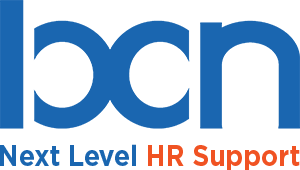Over one hundred and seventy thousand small businesses use co-employment to access Fortune 500 benefits at Fortune 500 prices. However, popular misconceptions continue to dog the term.
This is understandable since multiple forms of co-employment exist. The term itself brings about fears of “loss of control” for the business owner.
However, as mentioned, this is a misconception when dealing with a Professional Employer Organization (PEO). PEO co-employment keeps business owners in charge of all day-to-day decisions.
What is PEO Co-employment?
Co-employment is a legal tool that allows two employers to split the responsibilities of an employer between two organizations. That may sound scary, but it doesn’t mean that a co-employer can manage, hire, or fire your employees.
Co-employment allows PEOs to become “employers of record.” This enables a series of benefits which includes:
- Payroll tax remittance: The average business owner spends 5 hours per pay period dealing with payroll taxes. So, is it surprising that the vast majority of business owners are unhappy with their payroll processes? PEOs use co-employment to help you avoid payroll tax issues, improve your payroll workflows, and avoid payroll headaches. Not only do PEOs completely handle your payroll needs, but your PEO files payroll taxes under their Federal Employment Identification Number (FEIN) — assuming regulatory responsibility in the process. 40% of SMBs incur IRS penalties each year. PEOs keep you out of that percentage.
- Affordable benefits: SMBs pay 18% more than Fortune 500 companies for benefits, and they often receive worse benefits for that pay hike. PEOs can help. Co-employment allows PEOs to list your employees as their employees. So, what happens when your PEO works with hundreds of other businesses? They can bring thousands of workers to the negotiating table with benefits providers to secure Fortune 500 benefits at Fortune 500 prices. In other words, PEOs help small and mid-market businesses level the playing field.
- Better Workers’ Compensation coverage: Not only do PEOs help you handle claims administration, but you’ll also have access to the PEO’s workers’ compensation plan. Again, co-employment provides unparalleled value for benefits and insurance. Not only will you get better coverage, but you won’t have to pay an upfront deposit (since your PEO will always have a workers’ comp plan running). That means you can pay-as-you-go while getting better e-mod and premium rates.
The cost savings are so drastic that working with the average PEO has an ROI of 27.2%.
PEO Co-employment vs. Temporary Staffing Agency Co-employment
In December 2000, Microsoft lost a lawsuit to temp workers due to being entangled in a staffing company co-employment relationship. The $97 million verdict saw Microsoft pay out benefits and additional costs to temp workers who argued that they deserved the same treatment as traditional employees. This news spread fast. Within a week, nearly every major publication was running headlines on the lawsuit, and thousands of companies quickly feared the ever-dreaded word “co-employment.”
But that lawsuit dealt with temporary staffing agencies.
The “co-employment” that PEOs use and the “co-employment” that staffing agencies use are completely different. Staffing agencies are “joint employers,” and joint employers open your company up to significant risk.
The Department of Labor (DOL) released guidelines specifically meant to keep PEOs out of joint-employer status. To become joint employers, businesses must answer yes to one (or more) of the following questions:
- Does the co-employer supervise or control working conditions to a “substantial degree”?
- Does the co-employer hire or fire employees?
- Does the co-employer determine the employee’s method and rate of payment?
- Does the co-employer maintain any employee’s employment records?
In other words, PEOs are co-employers, but they are not joint employers.
Staffing agencies are both co-employers and joint employers. Staffing agencies control hiring and firing, and many of them maintain employment records and rate of payment.
PEOs, by nature, do not incur joint employment — so they do not introduce unnecessary risk into your organization.
How PEOs Can Help With Recruiting
Can PEOs help businesses with recruiting?
Absolutely!
But not in the same way that staffing agencies help.
PEOs act as trusted advisors. They can help you write job postings, create amazing hiring strategies, and build a magnificent workplace culture. However, they don’t actually hire anyone.
Here are some ways PEOs can help with recruiting that have nothing to do with co-employment.
PEOs can help you:
- Write and update job descriptions
- Work on interviews via training
- Formulate best-in-class offer letters
- Check job histories, references, run background checks, and check MVA records
- Create confidentiality agreements, non-compete agreements, and non-solicitation agreements
- Publish amazing handbooks, perform drug testing, and provide ongoing hiring education
- Perform HR audits
- Assist with exit interviews
- and more!
Notice, none of these services have anything to do with hiring, firing, or discipline. PEOs act as liaisons — not bosses.
Unlock the Power of Co-employment
Co-employment isn’t the boogeyman; it’s a vital tool that PEOs leverage to bring tangible value to their partners. Fortunately, co-employment simply scratches the surface of the benefits that PEOs can provide to your company. So, next time you think “co-employment,” don’t think about “loss of control” — think about more affordable benefits, less paperwork, and pay-as-you-go workers compensation coverage.

